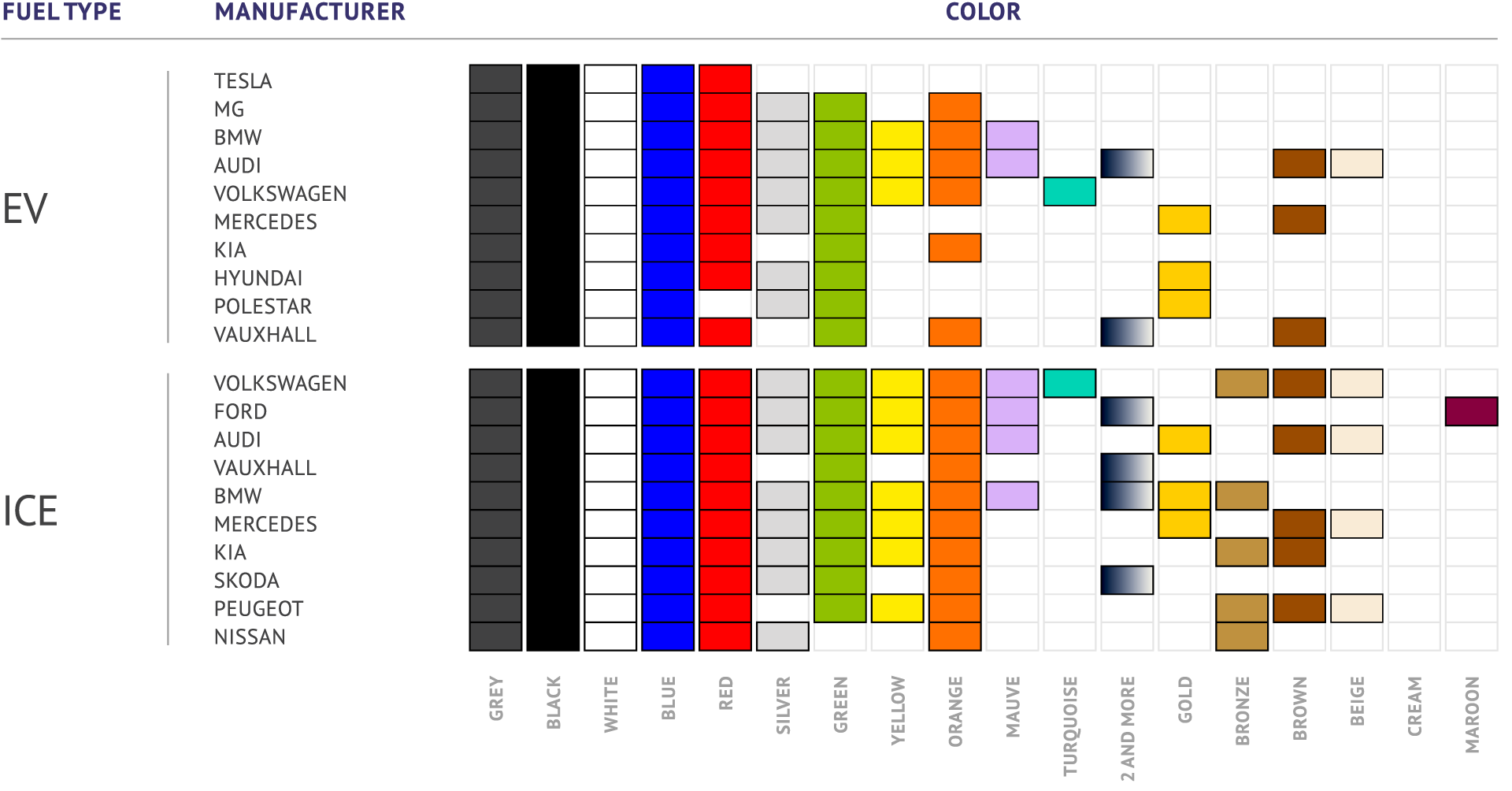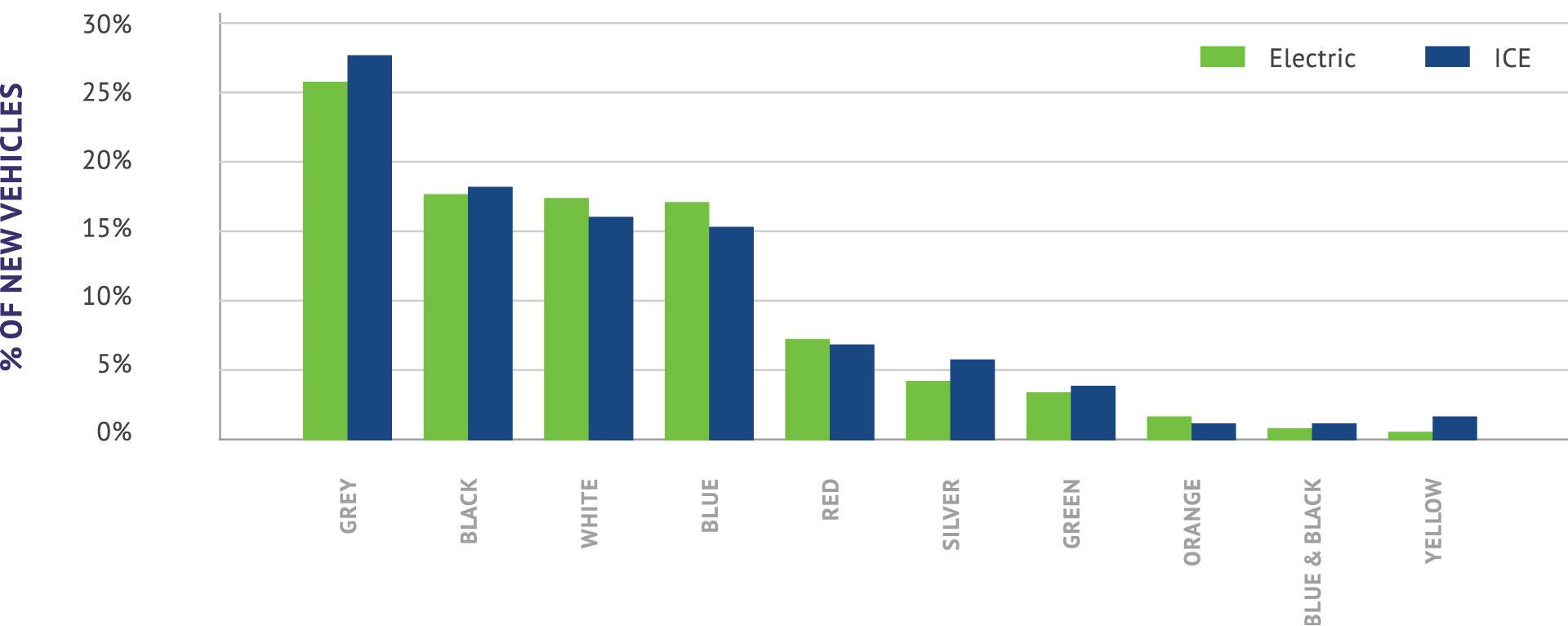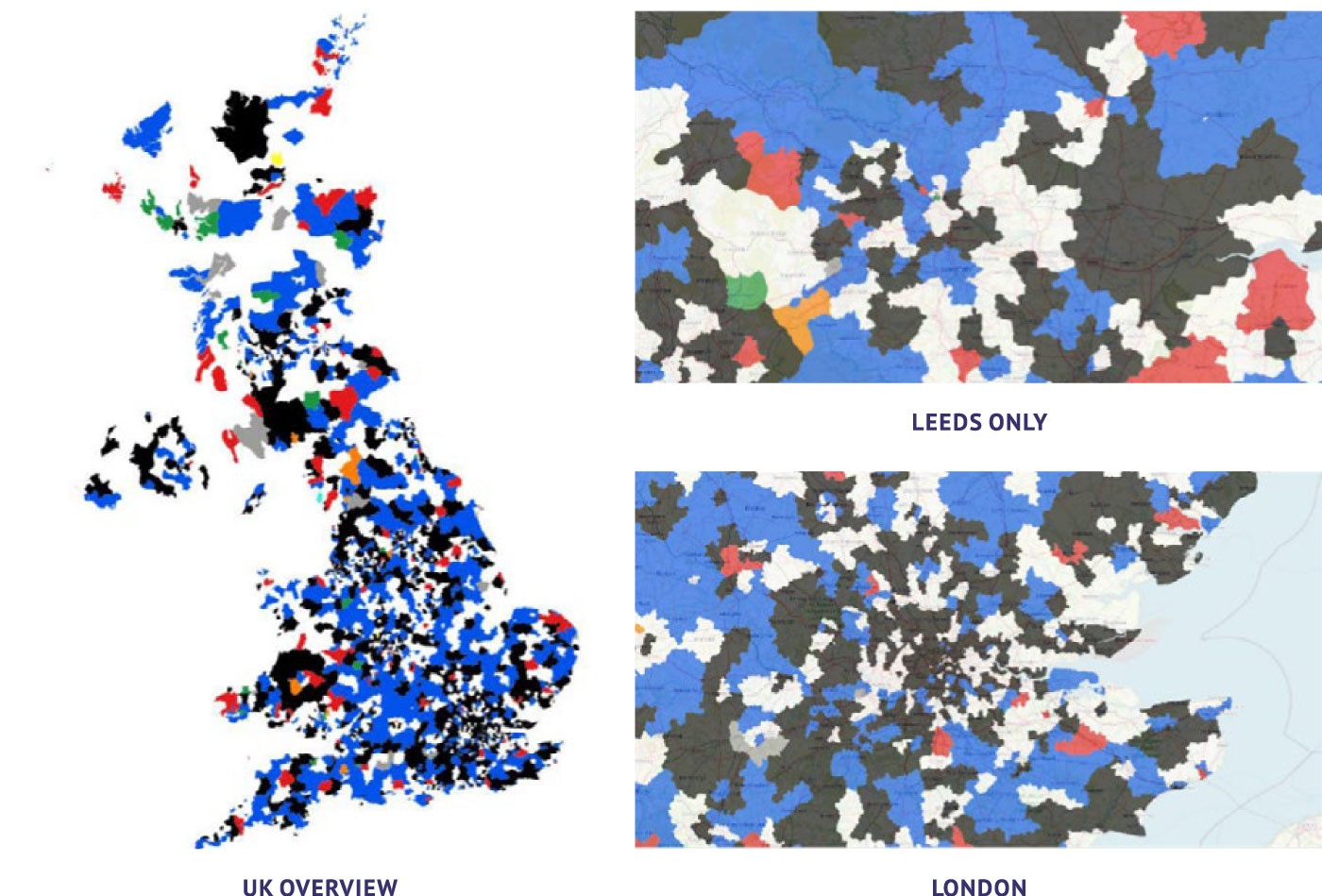-
SOLUTIONS
MANUFACTURER
NETWORKPERFORMANCEProactive network management to connect today’s consumers with automotive more efficiently.
SALESPERFORMANCEUncover what really impacts daily performance to grow market share.
AFTERSALESPERFORMANCEBring customers back to increase service retention and build long-term loyalty.
MARKETINGPERFORMANCEScientific precision to make every marketing dollar work harder.
- RESOURCES
- NEWSROOM
- ABOUT US
- CAREERS
- EVENTS
April 29th, 2024
Shades of change:
How color preferences could influence EV adoption.
In the ever-evolving automotive industry, the significance of car color extends beyond aesthetics, embodying personal taste, societal trends and even technological progress. As the UK embraces Zero-Emission Vehicle (ZEV) mandates, understanding and addressing the nuances that could influence electric vehicle (EV) adoption becomes imperative. Among these, vehicle color preference stands out as a subtle yet influential factor that warrants closer examination for its potential impact on consumer behavior and market dynamics.
Recent analysis of color preferences among new car buyers in the UK reveals interesting insights, particularly when comparing the offerings and choices between EV and internal combustion engine (ICE) vehicles. Despite the dominance of traditional color families like grey, black, white and blue, there’s a notable discrepancy in the variety of color families offered by EV manufacturers compared to their ICE counterparts. For instance, Tesla, a leading EV brand, provides just five color options, whereas Volkswagen, a top ICE manufacturer, offers a broader spectrum of 14 color family choices.

This difference in color availability could influence private buyer preferences. In 2023, the color preferences of private passenger car buyers remained consistent across both EV and ICE segments. Grey emerged as the top choice, comprising 27% of purchases, followed closely by black, white, blue and red. However, a shift towards less conventional colors (white, blue and red) was more pronounced among EVs. The divergence is particularly evident in the choices of white and blue, with nearly a 2% higher preference among EV owners. This disparity is partly attributed to Tesla’s Model 3 and Model Y, which featured white as a no-cost option until mid-2023, boosting its popularity.
Top-10 most popular colors in 2023 among private buyers


The preference for blue also stands out, especially among private buyers of MG Motors, Kia and Audi EVs, further distinguishing the color choices between EV and ICE consumers. This variance underscores the potential for manufacturers and dealers to tailor their offerings and marketing strategies more closely to consumer preferences, enhancing the appeal of EVs in a competitive market.
A deeper examination into regional preferences reveals a colorful mosaic of tastes. When grey is excluded from analysis, a wider range of preferred colors comes to light, showcasing a notable inclination towards red across most cities, highlighting a uniform shift in preference. Leeds stands out with a unique preference for green, indicating localized tastes distinct from the broader trends. Meanwhile, London’s color palette remains conservative, maintaining a preference for traditional colors including black, white and blue, even in the absence of grey.
This nuanced understanding of regional preferences underscores the importance of recognizing geographic and demographic influences on color choice. A tailored approach, as opposed to a broad, one-size-fits-all strategy, is crucial for aligning EV color offerings with localized tastes and preferences. By navigating these potentially overlooked yet significant barriers to EV adoption, manufacturers and dealers can pave a smoother path towards a sustainable automotive future, enhancing the appeal of EVs and contributing to the broader goal of emission reduction.
Dominant color choice by post code district in 2023 among private buyers

Science as a solution
Since our founding over 45 years ago, our proven, scientific approach to retailer planning has continued to improve and evolve. It’s an approach that stays ahead of the technological curve to help improve the performance of retailer networks – and it continues to be the industry standard.
If you’d like to talk to someone at Urban Science about the topics discussed in this article, including learning about ServiceView™ – our aftersales tool that optimizes the service-alert handling process and helps identify and quantify incremental revenue opportunity delivered via telematics – call or email me.
To learn more about the future of EVs and access cutting-edge insights, don’t
hesitate to reach out today..
 Victor Anishchenko
Victor Anishchenko
Senior Manager
VAnishchenko@urbanscience.com
